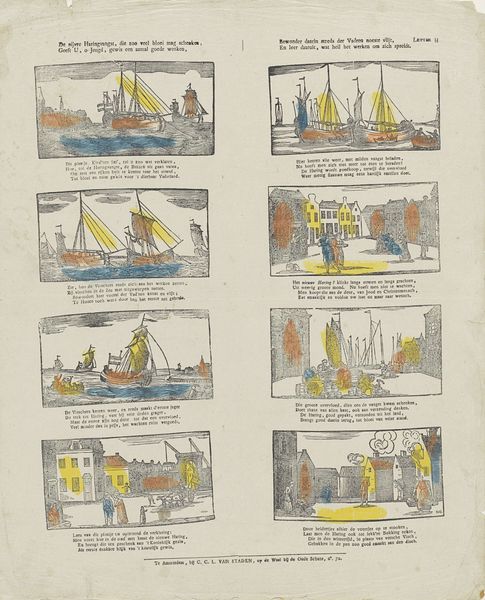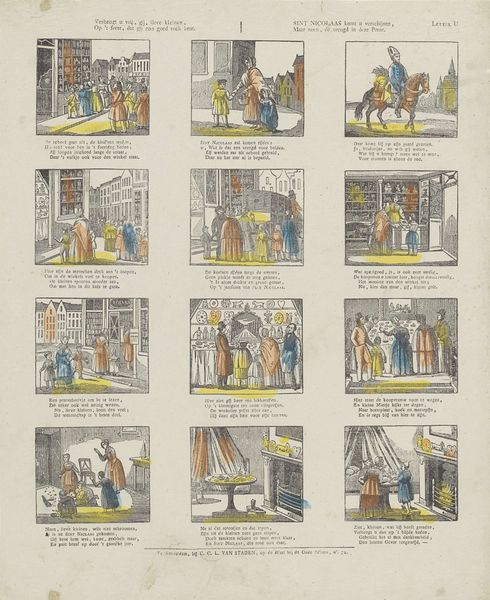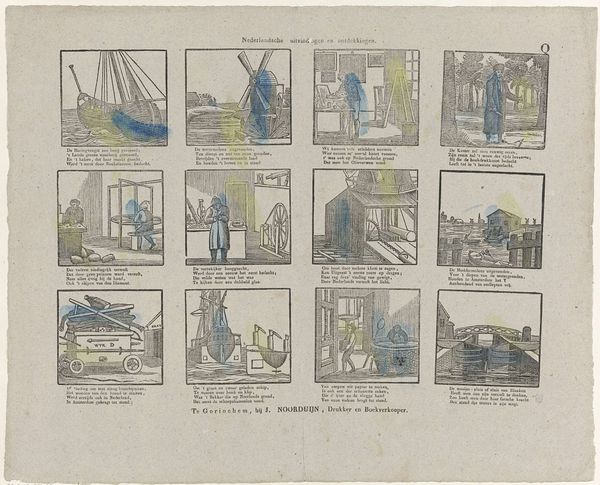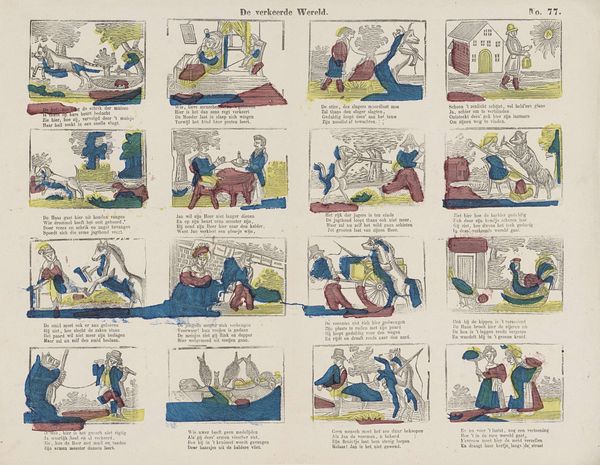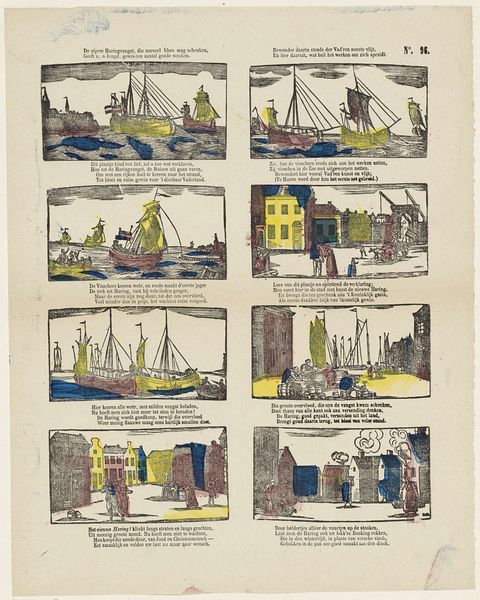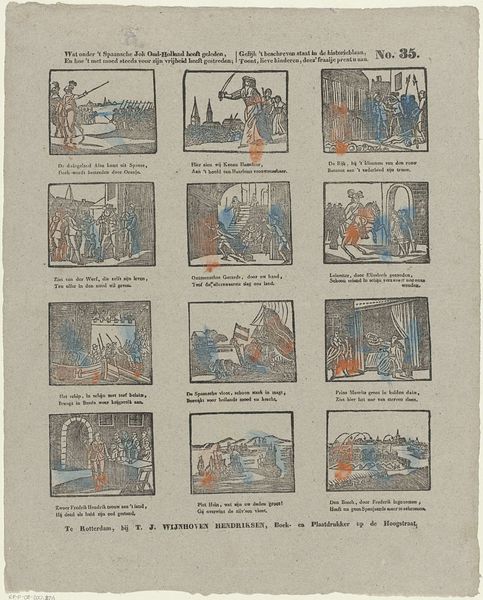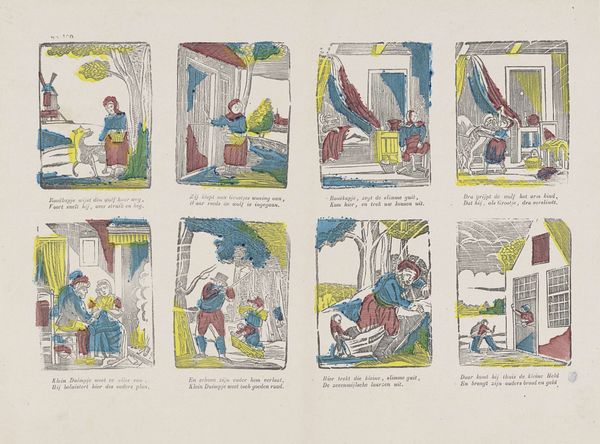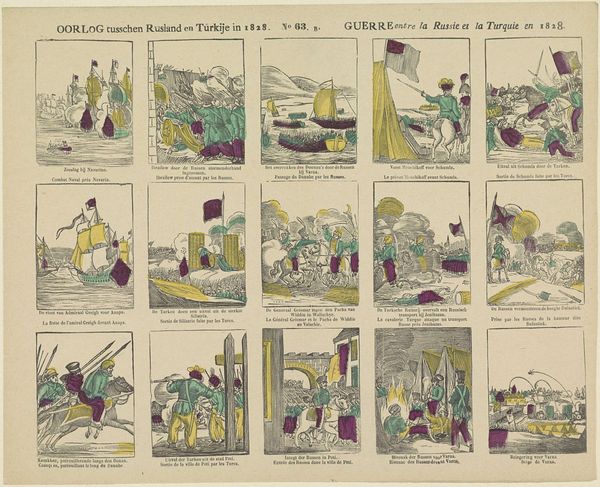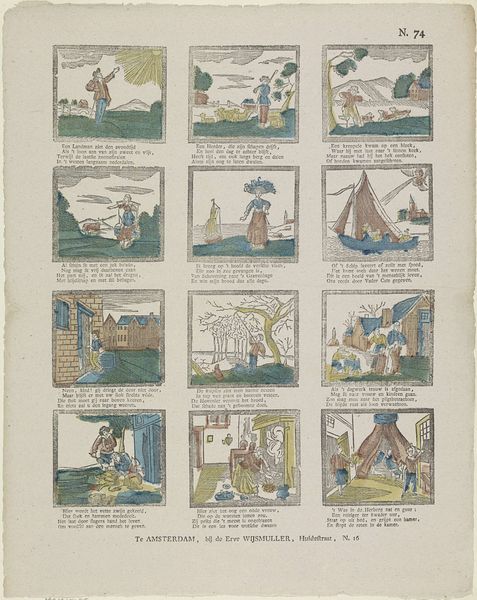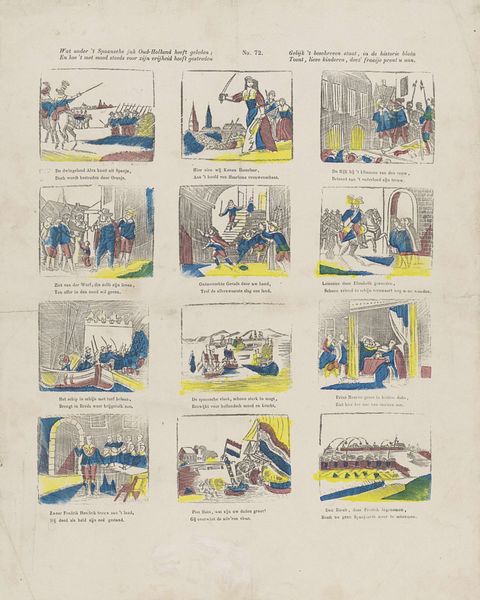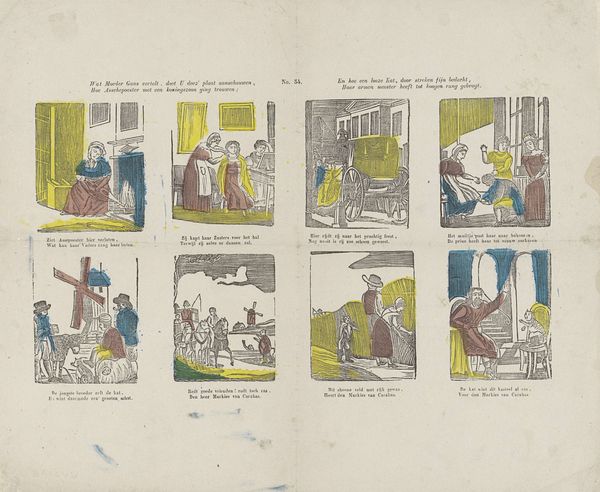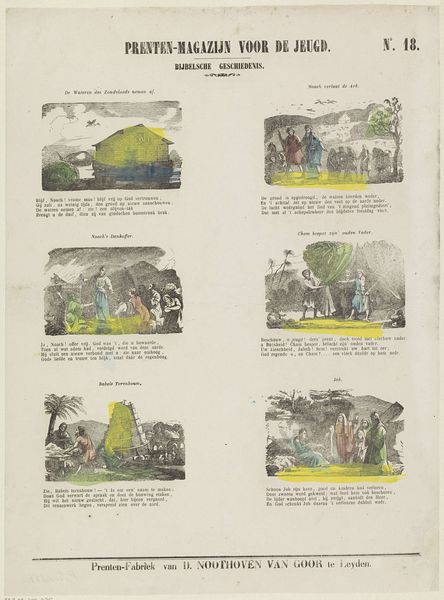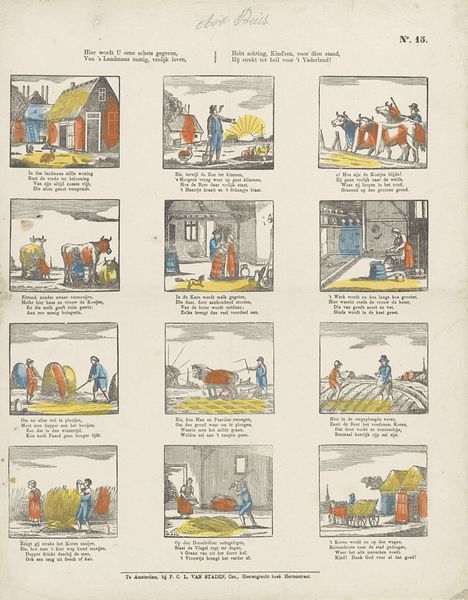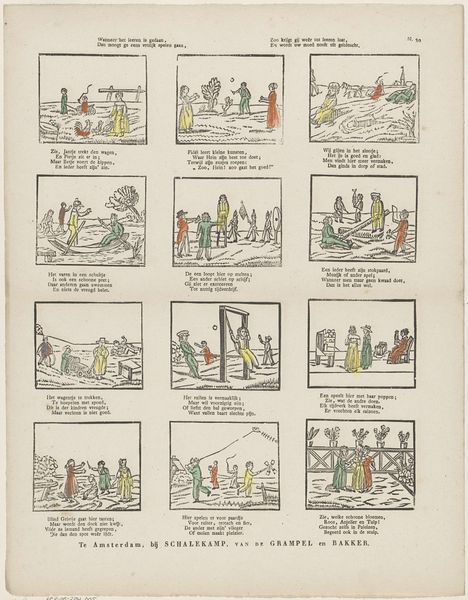
De nijvre haringvangst, die zoo veel bloei mag schenken, / Geeft u, o jeugd, gewis een aantal goede wenken, / Bewonder daarin steeds der vadren noeste vlijt, / En leer daaruit, wat heil het werken om zich spreidt 1850 - 1870
0:00
0:00
print, engraving
#
narrative-art
#
dutch-golden-age
# print
#
landscape
#
cityscape
#
genre-painting
#
engraving
Dimensions: height 405 mm, width 309 mm
Copyright: Rijks Museum: Open Domain
Curator: This engraving, dating from between 1850 and 1870, presents a series of vignettes illustrating the herring fishery. Its full title, rather lengthy in the Dutch tradition, translates to "The industrious herring fishing, which may bring so much prosperity, / Gives you, o youth, certainly a number of good pointers, / Always admire the diligent zeal of the fathers in it, / And learn from it what blessings working spreads around itself." Editor: My eye is immediately drawn to the distinct division of labor and materials pictured within. Look at the boats, the nets, and the figures engaged in various stages of catching, processing, and selling. It speaks to the economic cycle inherent in a simple catch. Curator: The imagery of boats loaded with herring evokes a long history of maritime power, while individual scenes of industrious men provide continuity with themes from the Dutch Golden Age of painting, reminding me of national identity built on seafaring and trade. The sea is also, in this artwork, connected to family virtues, as pointed in the titlte, by encouraging admiration of diligence. Editor: The very act of creating an engraving underscores a dedication to skilled handiwork. Consider the copper plate required, the careful carving to replicate each scene, and the repetitive labor involved in producing these prints. These were destined for wider distribution, making them a form of popular visual instruction on economy and value, not simply art for the wealthy elite. Curator: Notice also how particular symbolic associations seem connected in each illustration. It feels very intentional. We see ships connected with labour, the figures on land and the cityscape become intertwined and associated, creating the feeling that everybody plays its role. It reminds us to old customs, making this image into an almost didactic illustration of the way the world works. Editor: The standardization offered by printmaking also implies a controlled message. How deliberate was it to show ideal scenes rather than grapple with more realistic consequences of a physically taxing industry? Whose story is privileged here, the worker's or that of the society which benefit from their contribution? Curator: Indeed, what begins as something resembling reality ends up a set of idealized pictures of labour. It also raises fascinating questions regarding which traditional narratives and values might be found in the images used in print, that became easily and quickly spread in large quantity thanks to technological developments. Editor: Seeing these scenes together now, thinking about their making and their distribution, I am made very aware of how interconnected the materials and modes of labor that it portrays, and its own mode of production were! Curator: Absolutely, this piece certainly resonates even today, considering all that symbolism and social narrative that encompasses it.
Comments
No comments
Be the first to comment and join the conversation on the ultimate creative platform.
